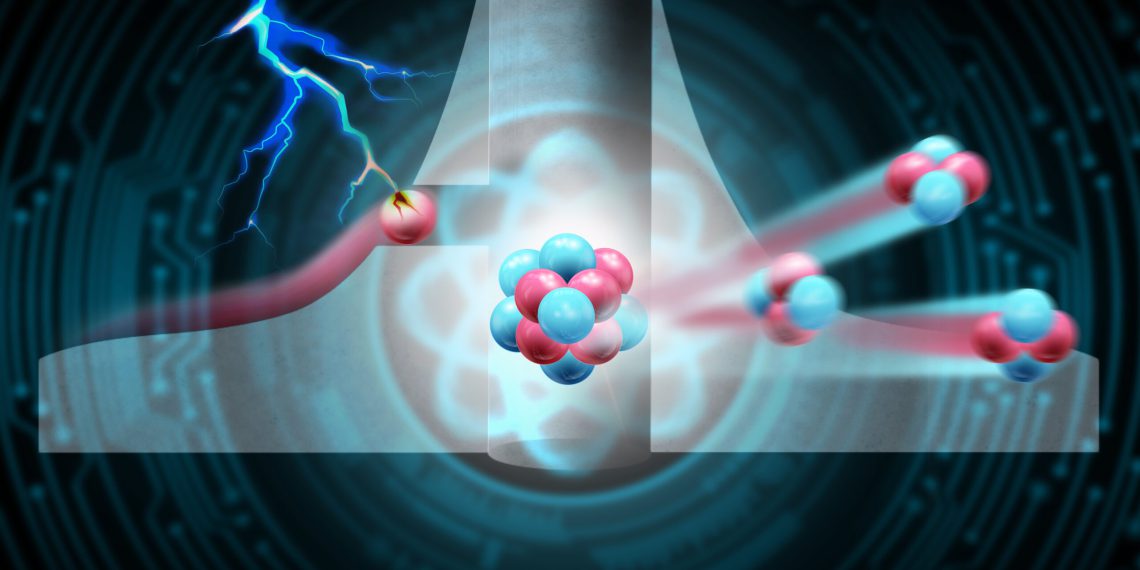Pulsed electric fields caused by lightning strikes make themselves felt as voltage spikes and represent a destructive hazard for electronic components. They cause considerable damage. A team from the Helmholtz-Zentrum Dresden-Rossendorf (HZDR) has now discovered that such voltage spikes can have quite useful properties. In the journal Physical Review Research (DOI: 10.1103/PhysRevResearch.3.033153), the scientists report how, for example, nuclear fusion processes can be significantly enhanced by extremely strong and fast pulsed electric fields. Nuclear fusions, such as those that take place in the sun, are made possible by the quantum mechanical tunnel effect.
“One consequence of the tunnel effect is that similarly charged particles can overcome their mutual repulsion, even if their energy is not actually sufficient to do so — at least not according to the laws of classical mechanics. We can observe something like this, for example, in the fusion of two light atomic nuclei: The closer one nucleus approaches the other, the greater the repulsion, which we can imagine figuratively as a mountain piling up in front of the nucleus, the so-called potential barrier. Instead of taking the more energy-consuming path over the top, the laws of quantum mechanics allow the nucleus to penetrate or ‘tunnel’ straight through this mountain in a much more energetically favorable way — and finally to fuse.”
- Prof. Ralf Schützhold, Head of the Department of Theoretical Physics
Although the tunneling effect plays an important role in many areas of physics and was first described nearly one hundred years ago, our understanding of the process is still incomplete today. “Various facets of the influence of electric fields on tunneling processes were already known. For example, electric fields can additionally accelerate particles, helping them to gain more energy. They can also deform the potential barrier and increase the tunneling probability in this way,” says Dr. Christian Kohlfürst, outlining the situation at the beginning of their research.
His colleague Dr. Friedemann Queisser briefly sums up their results: “Our calculations now show for the first time a special feature of pulsed electric fields that change rapidly in time: they can ensure that the particles are pushed out of the potential barrier, figuratively speaking, and thus tunnel more easily.” The calculations of the HZDR team show this quite concretely in various examples, including a fusion reaction of interest for possible energy generation: the fusion of a proton with the isotope boron-11.
Fusion reaction with advantages
It is interesting primarily because of the relatively readily available fuel. Three alpha particles, each with a double positive charge, are produced in the process. What is remarkable about this reaction is that the energy is released in the form of charged particles and not as neutron radiation as in the most well-known fusion reactions at present. This has advantages: For one thing, the problems associated with neutron flux would be significantly reduced, such as the dangers of dealing with ionizing radiation. For another, the energy of charged particles can be converted directly, and thus much more easily, into electricity.
However, the conditions required to use the reaction are even more extreme than those of the deuterium-tritium fusion favored in the current ITER fusion reactor experiment. Igniting the proton-boron reaction is more difficult by comparison, and scientists are still searching for viable ways to do so. Schützhold’s team now points to one possibility: “According to our calculations, a sufficiently fast and strong pulsed electric field can significantly enhance not only deuterium-tritium fusion but also the proton-boron reaction.”
However, generating such fields is very difficult. “In principle, we can think of it as being like a thunderstorm, where the energy stored in huge cloud formations is discharged in the form of a lightning strike in a very short time and in a very confined space. Facilities are being built or planned around the world that are intended to concentrate ever higher energies into ever shorter periods of time and ever smaller spatial areas,” says Schützhold. Unfortunately, the facilities available today are not yet quite capable of generating such fast and powerful “artificial lightning.”
But there is a possible way out: The electric field of an alpha particle flying fast and, above all, close to the proton can act like such a pulsed electric field and strike so strongly that the proton can tunnel through the potential barrier of boron-11 and trigger the fusion reaction. Alpha particles with the necessary pulse energy are actually generated in the proton-boron reaction, but they can also be injected from outside.

















